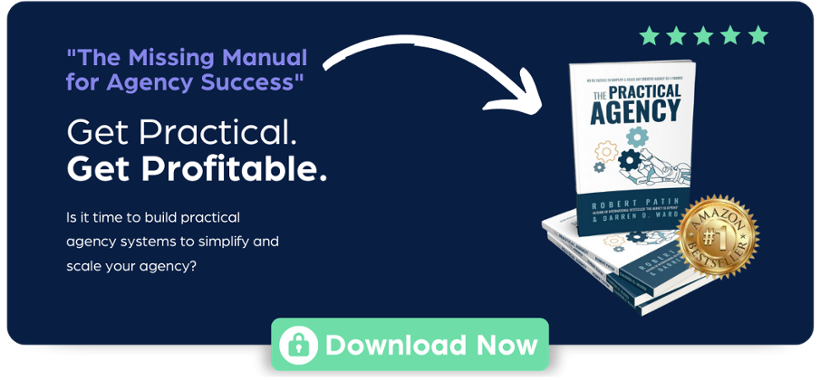
Don’t you hate the sinking feeling you get when you see a late-night email from your most demanding client come through?
Somehow, a client that started well quickly morphed into a demanding nightmare, completely monopolizing your time and slowly diminishing profitability. They seem to always have urgent requests or a laundry list of change requests, and it feels like the project will never end.
When this happens, it can be tempting to blame the client for being difficult. But the actual control lies with you as the agency. The good news is however, we have the power to turn things around and take back control of our client relationships.
4 warning signs a client relationship is going south

To effectively manage these demanding clients, it's crucial to understand the root cause of their behavior. If a client feels the need to monopolize your time, it means that they do not trust you.
How can you tell if a client is starting to lose trust? Keep your eye out for these common warning signs:
- Constantly asking for daily updates, indicating a lack of confidence in your progress.
- Neglecting to follow established processes, suggesting a lack of faith in your methodology.
- Micromanaging every aspect of the project, displaying a lack of trust in your abilities.
- Questioning your recommendations or decisions, demonstrating skepticism about your expertise.
A client that does not trust you will not feel comfortable taking a back seat. While the vast majority of clients do not want to be investing much time overseeing your mutual project, if they do not believe in your ability to get them the results they’re looking for, they won’t be able to give you the autonomy you need to work.
Luckily, when you know what warning signs to watch out for, you can proactively identify when a client is losing faith in you, and turn things around before it’s too late.
6 key processes you can’t run your creative agency without
When demanding clients start to take the project further and further away from the original agreed-upon scope, your operating costs will unavoidably start to increase. To ensure clients stay within the agreed-upon scope and keep costs under control, your internal processes need to be rooted in a strong foundation.
To ensure your projects and profit margins stay on track and your clients feel at ease, ensure you have accounted for the following components:
- Communication: Maintain open and transparent lines of communication with your clients. Establish clear channels for discussions, feedback, and updates from day one of the project.
- Setting Expectations: From the initial sales call, set realistic expectations and clearly define the project scope, timelines, and deliverables. Ensure the client understands what they can expect from you and what their responsibilities are.
- Statement of Work (SOW): Create a comprehensive SOW that outlines the project objectives, timelines, deliverables, and any limitations. This document serves as a reference point throughout the project.
- Effective Project Rollout: Ensure a smooth transition from the sales process to project execution. Communicate critical information gathered during the sales process to your operations team, leaving no room for misinterpretation.
- Defined Delivery Method: Establish processes and workflows that empower your team to move projects forward without your constant intervention. Develop a unique delivery method that sets your agency apart.
- Regular Reporting: Implement regular reporting mechanisms to keep clients informed about project progress, milestones achieved, and results attained. This reinforces transparency and demonstrates your agency's accountability.
By honing in on these key components, you will not only keep your operating costs low, but you will develop a set of internal processes guaranteed to foster a collaborative and stress-free environment. Thankfully, when you implement these practices your clients will no longer feel the need to contact you at all hours of the night.
How to keep you and your client on the same page
Effective communication lies at the heart of every successful client relationship. To ensure your agency's processes incorporate this crucial element, it is essential to conduct two critical meetings at the onset of each new client engagement. These meetings serve as the foundation for a mutually beneficial partnership, setting the stage for seamless collaboration and clear expectations from the start.
Internal Kickoff Meeting:
- Share the insights gathered during the sales process with your operations team to align them with client expectations.
- Review the project scope, objectives, and deliverables with the operations team.
- Assign roles and responsibilities to ensure a clear understanding of who is accountable for specific tasks.
Client Launch Meeting:
- Conduct a goal review with the client to reaffirm their expectations and desired outcomes.
- Discuss the project timeline, including important milestones and deadlines.
- Clearly outline the client's responsibilities and deliverables throughout the project.
Time to regain control of your client relationships
As a creative agency owner, you possess the ability to manage demanding clients and maintain profitable relationships. By perfecting a proprietary process, setting clear expectations from day one, and maintaining effective communication, you can reclaim control and foster stress-free, mutually beneficial partnerships.
Remember, you are the expert, and with the right approach, you can turn demanding clients into satisfied clients.
